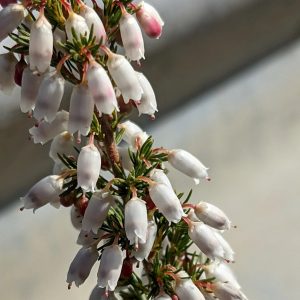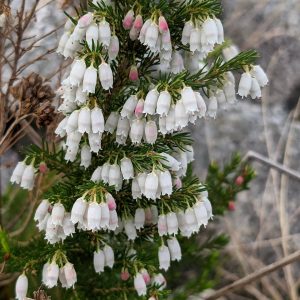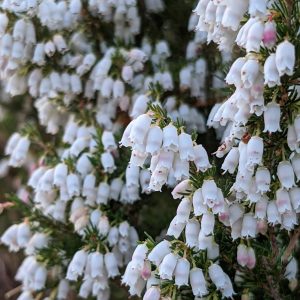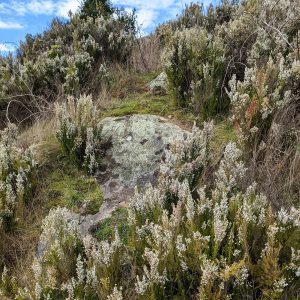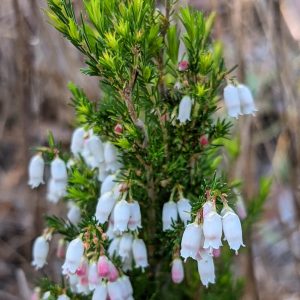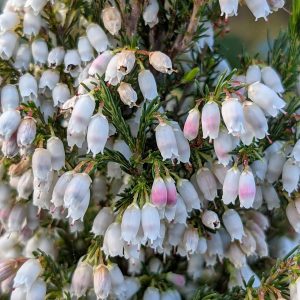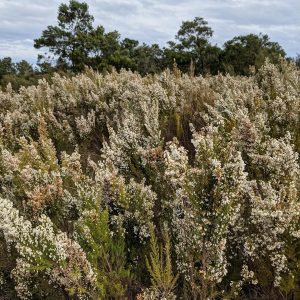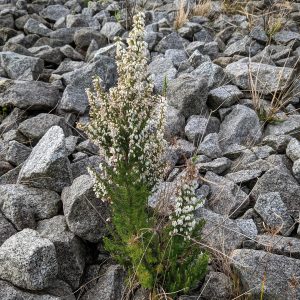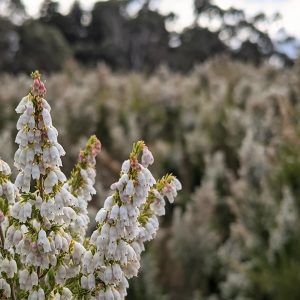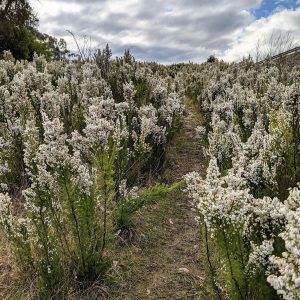Spanish Heath (Erica lusitanica), shining springtime fixture and prominent invader of Victoria’s acidic hill country.
Introduced to England from Spain and Portugal at an early date, the species was brought to colonial Australia as a bullet-proof winter ornamental and cut flower. As with so many period introductions, this was highly unfortunate given the array of fantastic native Australian heaths in the same family Ericaceae.
A single adult plant of Spanish Heath can produce millions of tiny seeds each year; moved around by water, vehicles, shoes, animals and wind, in the right environments the species forms a more resilient seedbank than competing native scrub.
Given this, Spanish Heath was almost certainly over the fence and away immediately. As a 1914 columnist in the Australasian summarised with full knowledge but no prescience, ‘it is one of our best hardy winter-flowing plants, and it resists drought and heat better than many others of the same family… It is said to be rabbit-proof, and that nothing can withstand the onward march of this plant.’
Resistant to grazing by rabbits, sheep and roos, Spanish Heath was soon established in stony country with good rainfall: first records made at Wheelers Hill and Officer in 1916 were soon followed by further collections: at Selby in 1932, Frankston in 1942, Emerald in 1945. Since the 1970s its Victorian range has expanded dramatically thanks to diminishing frost days and increasing mechanisation of land management. In the Western District, the plant is now a ubiquitous element of the Stony Rises and the country south of Ballarat; its march also continues across East Gippsland.
The photographed plants number in the tens of thousands around the massive Cardinia Reservoir, engineered in the 1970s from local crushed granite. A sprawling 50-year-old wind-catch of exposed rock and reformed soils subjected to intensive kangaroo grazing, the reservoir is accumulating novel aggregations of exotic weeds (watch this space) and native plants (e.g. Onion Orchids), alongside high quality native bushland.
View Original Post on Instagram
Search for information about Erica lusitanica in the Flora of Victoria
View information and occurrences of Erica lusitanica on the Atlas of Living Australia

